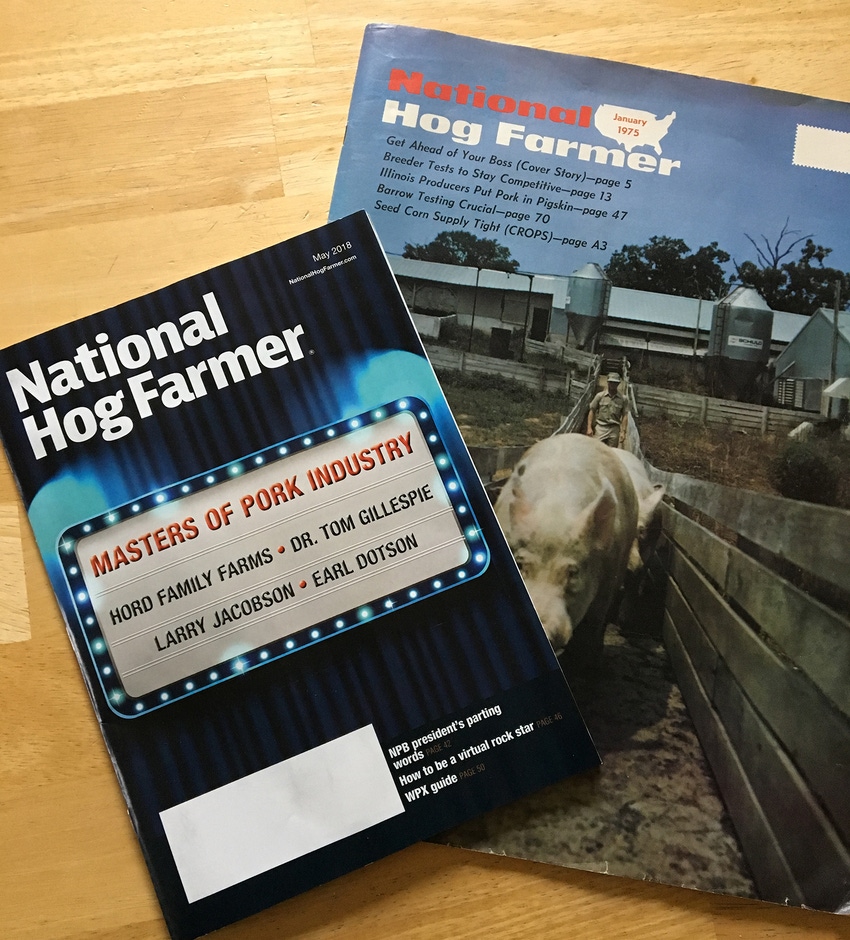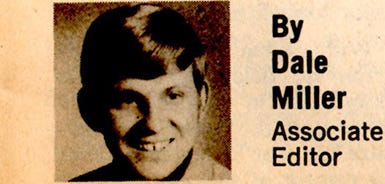A look back in the National Hog Farmer archives show that things evolve rather than change.

Having missed Throwback Thursday, how about Flashback Friday?
It’s always fun to look back and see how things have changed, or how they haven’t. My mother-in-law was doing some cleaning and ran across a January 1975 issue of National Hog Farmer, which she gave to me.
Take a look at the accompanying photo, and you will see how the National Hog Farmer has physically changed since 1975. As the cost of newsprint and paper (and everything else) has gone up, the physical size of publications has continued to shrink. That 1975 issue was about 14-inches by 11-inches, as where today’s version comes in at a sleek 10-½ inches by 7-½ inches. One thing that hasn’t changed in all these years, is the great content within the pages.
Neal Black was editor at that time, and his team that included associate editors Dale Miller, Ralph Watkins and C.R. Mitchell sought out the best information and research to help producer-readers much the same as Cheryl Day and I do today.

National Hog Farmer’s Dale Miller, circa 1975
Swine diseases were the big talk back then as well. Advertisements and news columns discussed everything from swine arthritis to swine dysentery to rhinitis to TGE. A one-column news brief on Page 67 of that 1975 issue shared “With another month without a cholera case, the nation continued its countdown toward national free status.”
As the Iowa State University College of Veterinary Medicine’s website says, hog cholera (now better known as classical swine fever) was eradicated from U.S. swine herds in 1976.
Just as the names of the NHF staff have changed, so have the diseases that inflict our herds and concern our producers. Porcine reproductive and respiratory syndrome virus and porcine epidemic diarrhea virus had yet to cross the lips of producers or keyboards of NHF staff.
It would be nice if we could see PRRS and PEDV have the same fate as CSF in the U.S. swine herd. Of course, CSF is still a valid concern as it remains persistent in much of the world.
Another piece that caught my eye in that 1975 issue had the headline “Buyer Demand Spurs Docking Pig Tails.” Nowadays we have grown accustomed to “buyers” or consumers dictating our livestock handling and processing practices in the name of animal welfare, of course, today they want the tails left on the pigs thinking it inhumane to have them clipped at such a young age.
The buyers in the case of the 1975 de-tailed pigs were those producers purchasing feeder pigs. A University of Tennessee economist reported that feeder pig buyers are ponying up for the de-tailed pigs, paying up to almost $5.50 per hundredweight more for 40- to 49-pound feeder pigs.
Feeder pig producers responded quickly to this demand and premium as Emmit L. Rawls, the economist, says in the article, “In January, we sold 12,599 docked pigs and 38,909 tailed pigs. In September, we sold 43,913 docked pigs and 6,277 tailed pigs.”
Now, that’s responding to what the consumer wants.
Something that hasn’t changed in all these years is the search for the good employee. Dale Miller wrote a Page 5 article about the characteristics that a farm owner looks for when in search of farm managers. “You need someone with the ambition to maybe get ahead of you someday, someone who’s trying to build something,” the farm owner told Miller.
Costs have changed a lot over the years, but the farm owner in Miller’s 1975 article says, just as farm owners today say, dollars aren’t the most important factor when a farm selects a manager or when a manager selects a farm.
Just as today’s farms’ human resource departments stress empowering employees to make decisions that are best for the entire farming operation and for the pigs, that was just as solid back in 1975.
I guess the more things change, the more they stay the same.
About the Author(s)
You May Also Like



